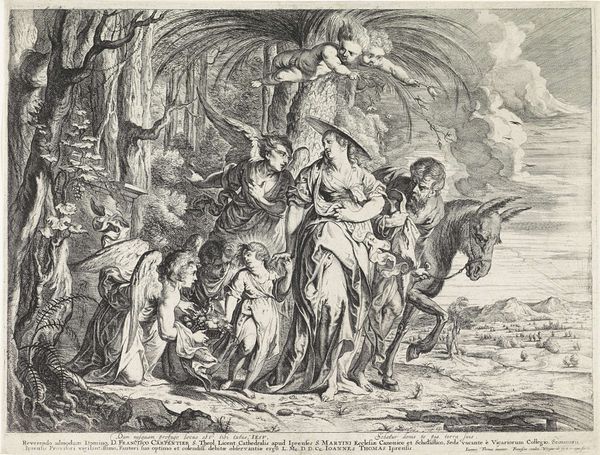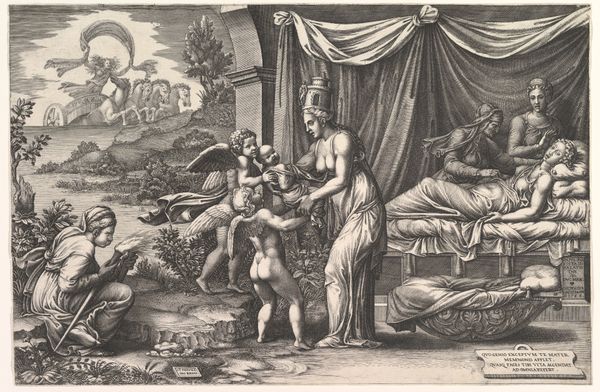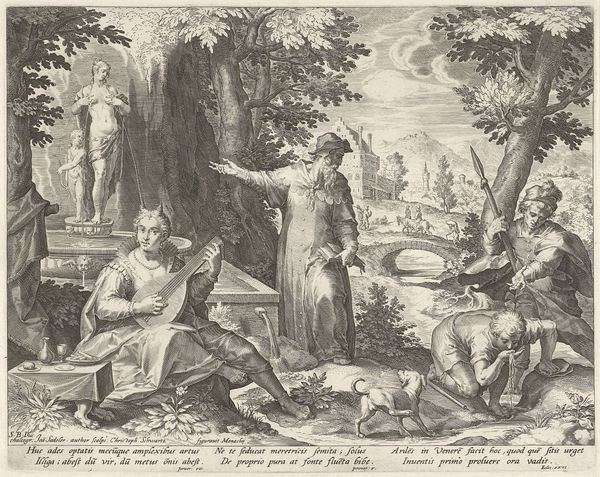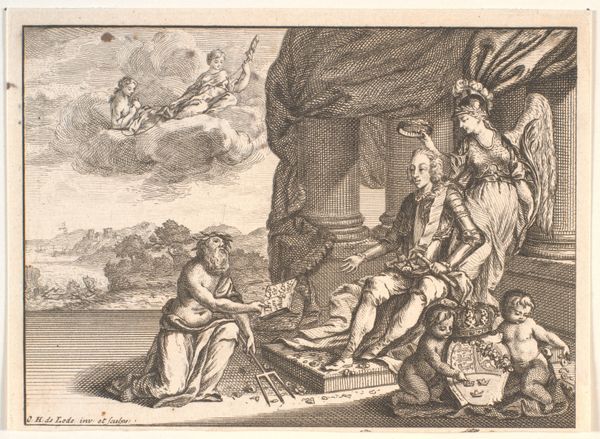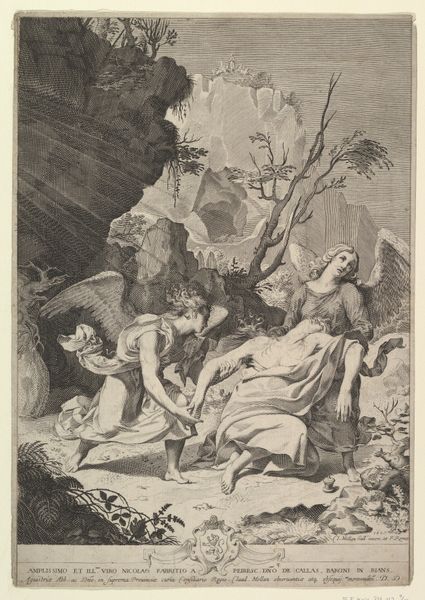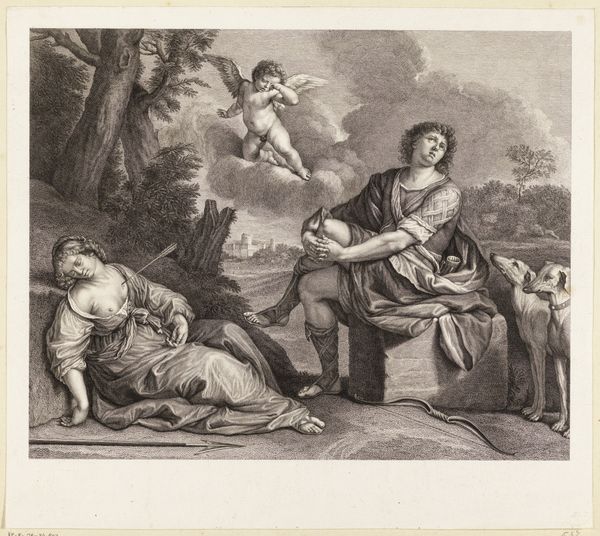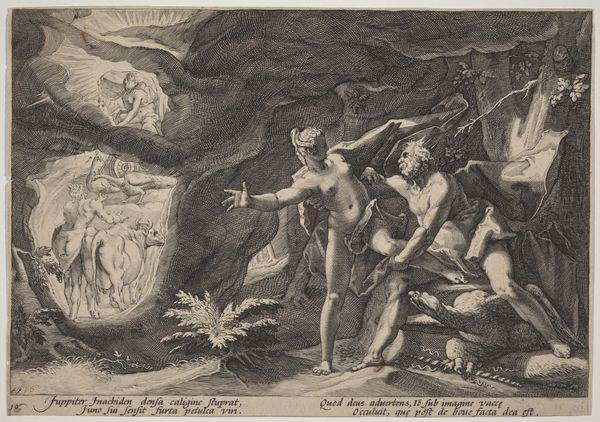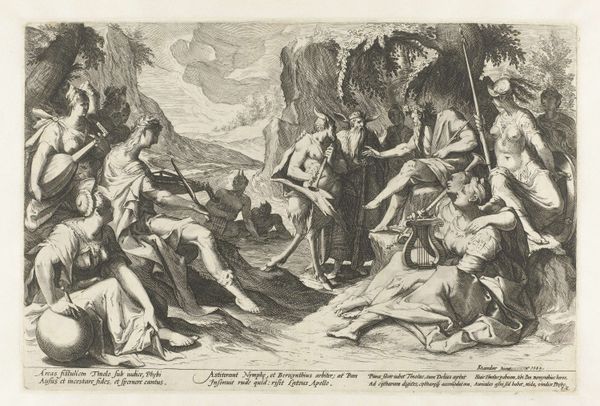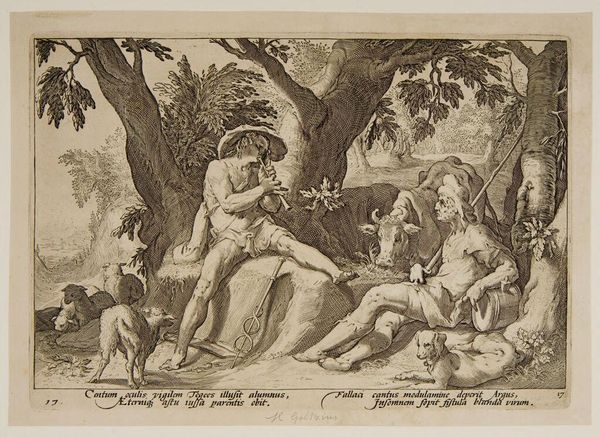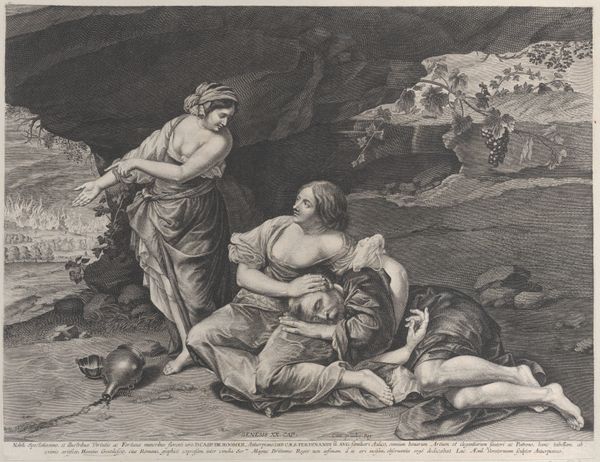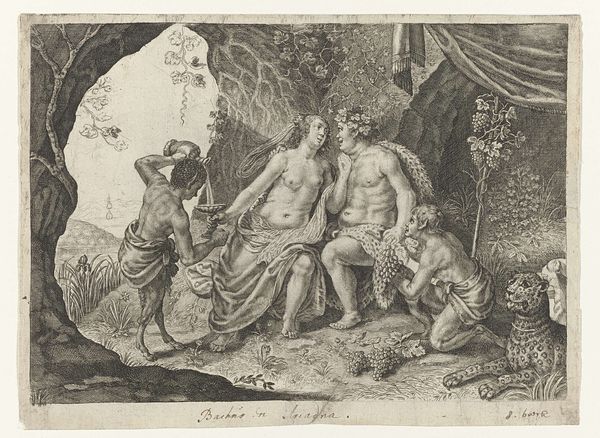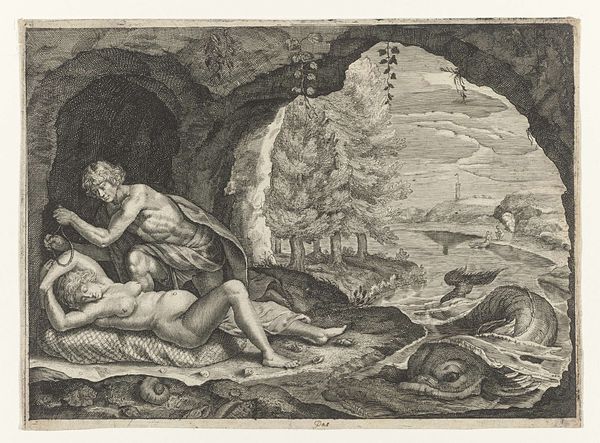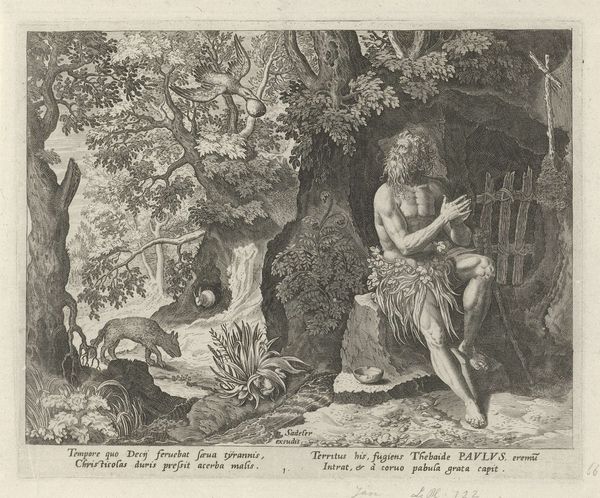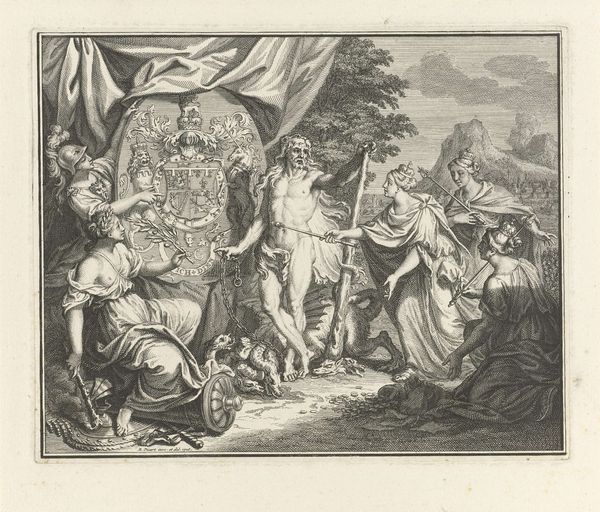
print, etching, engraving
#
allegory
# print
#
etching
#
mannerism
#
figuration
#
line
#
history-painting
#
northern-renaissance
#
nude
#
engraving
Dimensions: height 270 mm, width 393 mm
Copyright: Rijks Museum: Open Domain
Curator: Immediately striking is the sense of unease; the sharp, almost frantic lines of the etching seem to amplify the distress etched on the figures' faces. Editor: You're absolutely right. Today we are looking at "Lot and His Daughters," an engraving and etching crafted in 1558 by Philips Galle, a prominent figure of the Northern Renaissance. It depicts a rather unsettling scene from the Book of Genesis, currently held in the Rijksmuseum collection. Curator: Galle masterfully uses line and composition to express movement. Look how Lot is centered but supported on either side by his daughters. Galle contrasts his central placement to his evident physical and emotional dependence on his daughters to survive this moment. Editor: Indeed. The print presents Lot as being rescued from the destruction of Sodom. In the background, we can still make out the burning city, a visual representation of divine punishment, whilst his daughters support him in a cave offering wine. Curator: The expressions on the figures are truly captivating. The daughter on the left almost steels herself. This is contrasted by the other, who is already partially reclined. Both cling to Lot; their expressions suggest less concern and more sinister intent. Editor: Galle, working during the rise of print culture, played a vital role in disseminating biblical stories and moral allegories to a broader public. Prints like this allowed narratives and interpretations to circulate widely, influencing social and religious understandings. The Mannerist style contributes a sense of dramatic intensity through elongated figures. The story touches upon themes of sin, salvation, and familial loyalty, made potent through Galle's skill with the engraving tools. Curator: There’s an almost dreamlike quality in the combination of precise detail, the almost ornamental drapery set against the violent scene depicted in the background. The detail contrasts the uncertainty and, as you pointed out, dramatic action central to the print. Editor: Looking closely, we can admire the artist's sophisticated handling of textures—the smooth skin, versus the coarse fabric. It draws the eye, making it a rich experience. The interplay contributes to an atmosphere that is, indeed, intensely compelling. Curator: A lasting piece then, both for its formal execution and the glimpse into societal values and concerns of the 16th century. Editor: Precisely. It's a stark portrayal, demanding our attention still, centuries later.
Comments
No comments
Be the first to comment and join the conversation on the ultimate creative platform.
